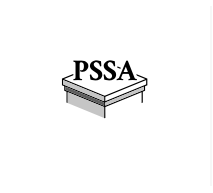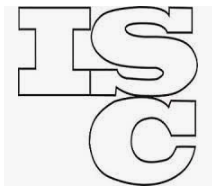
Commissioning a Bronze Statue

Question: Why should we invest in Fine Art, made of bronze, in the first place?
So glad you asked.
Answers:
1. Other than an annual waxing bronze statues are completely maintenance free!
2. Bronze art lasts outdoors, for literally, hundreds, even thousands of years.
3. Bronze statues withstand hailstorms, kids climbing on them, floods, tornadoes (if installed properly), and all animals indigenous to North America.
4. Other than gold, sculptures made of cast bronze embody the greatest integrity of all castable metals "known to man." So to invest in these tangible objects of beauty is a solid investment.
5. Bronze statues not only hold their value but always appreciate over time (especially after the sculptor's death)!
Where to Begin When Selecting a Bronze Sculpture Artist
The process for commissioning bronze Fine Art,
in 12 simple steps:
1. Contact
2. Paperwork
3. 1/3 Deposit
4. Design & Model Production
5. *Minor Changes/Adjustments to Model
6. Final Approval of Small Scale Model
7. Next 1/3 Payment Due
8. Produce Bronze Sculpture
9. Inspect and Approve
10. Final Payment Due
11. Delivery of Sculpture to Site
12. Satisfaction Guaranteed
*Our Change Order Policy: https://docs.google.com/document/d/1awpsdY_iezNxKDBPyXxquFLAncRoeG9ojMlrlVGEjN0/edit?usp=sharing
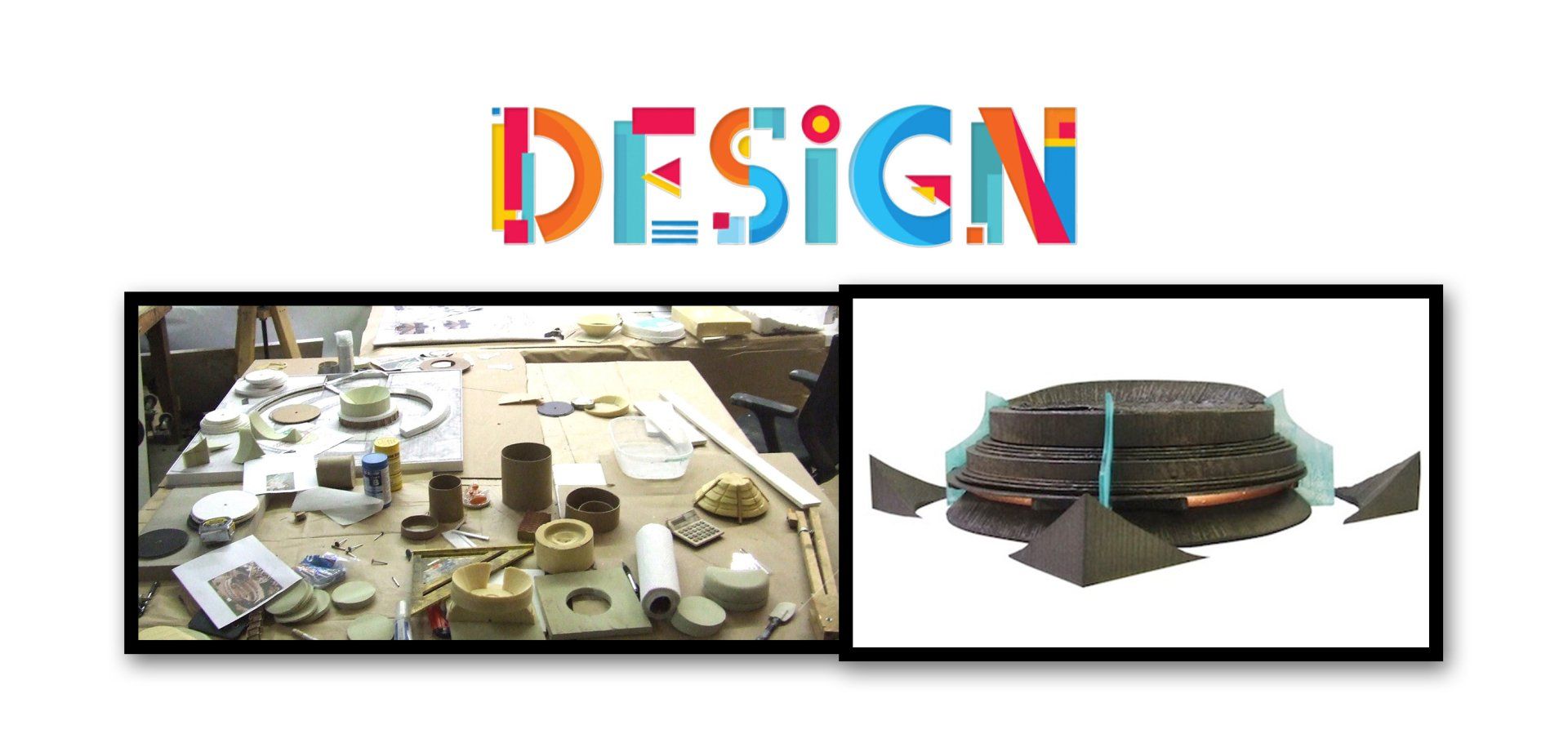
Professional statue design is crucial. Let's take this project, as a simple example of sensible and professional design. As you can see in these behind-the-scenes photos, we obviously worked through a number of physical, 3-d statue base designs until we came up with the best of the best. We are sort of old fashioned that way. There is just something about designing prototypes with real life, physical materials, as opposed to computer design, that has contributed to our continued success. (Sort of like the difference between an in-person meeting and a virtual meeting).
A virtual meeting is quicker, cheaper, and certainly more convenient, but there is no substitute for a real life, eyeball-to-eyeball meeting. Similarly, there is no substitute for a small scale model our clients can inspect on a table and touch with their hands, in three dimensional space. No illusions. Inspected in physical space, in the round. No room for error.
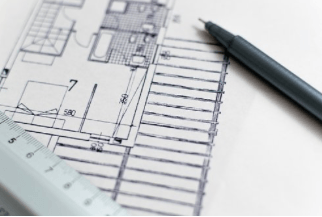
Design.
Design.
Design.
As an example, the above seven-foot-diameter bronze and glass outdoor pedestal design that we created for Papa John's International called for four thick tempered glass panels, each internally lit with LED lighting. Additionally, the internal lighting system spills out between the tiers for seductive nighttime allure. Moreover, our sleek, curvilinear contemporary bronze bollard design (outer perimeter) not only compliment the overall design they protect the bronze from stray cars in nearby traffic and also offer little personal nooks for folks taking social media selfies.
The design phase is where we begin working with you, the client, first with the narrative development, and conceptualization. If we need to provide a written story version of the concept at hand, to create excitement and share our vision we will. We love what we do and will do whatever it takes to ensure your evolutionary understanding.
We typically work up sketches or graphic renderings during the "birthing process" then make small adjustments to guarantee your complete satisfaction.
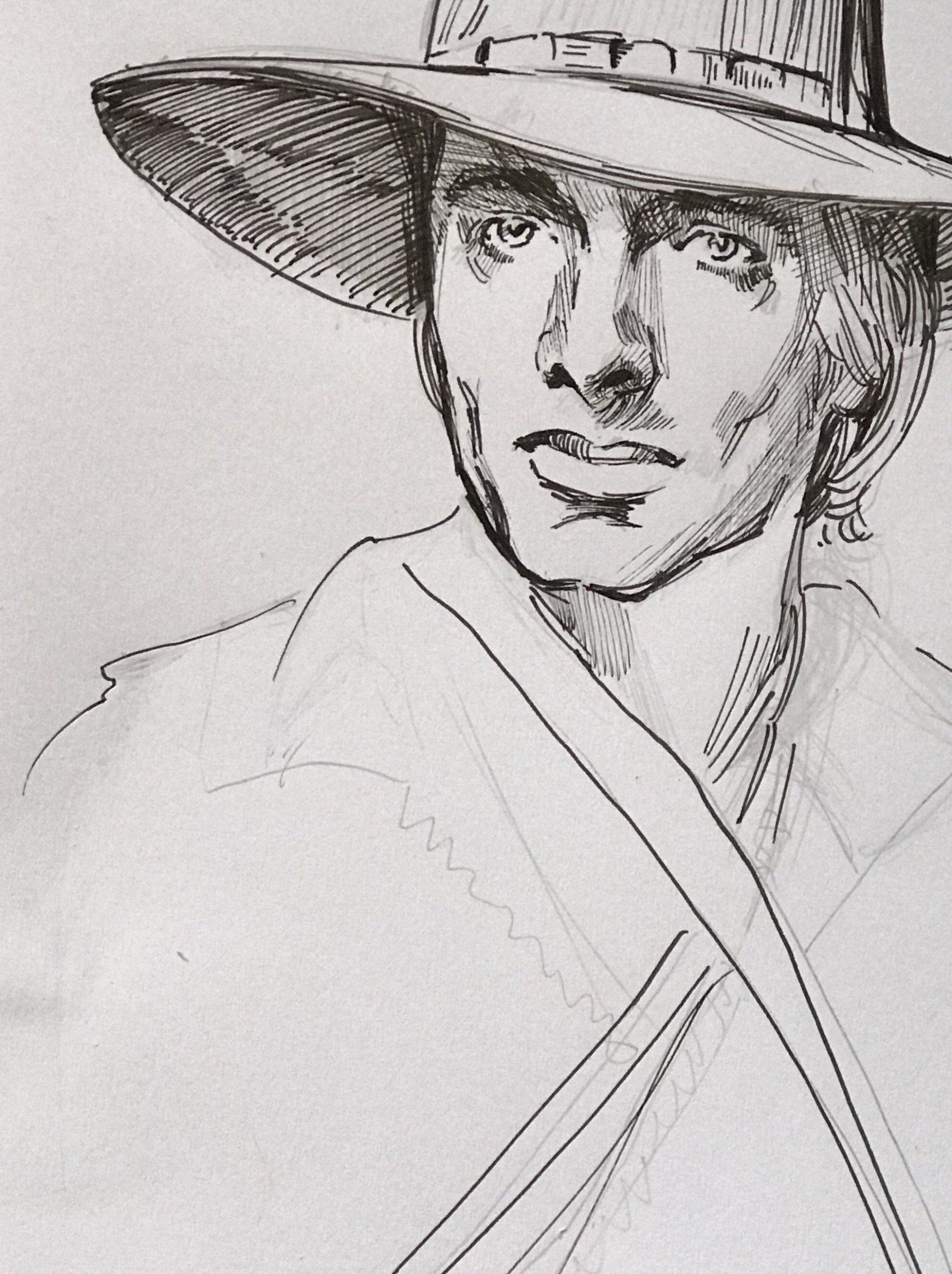
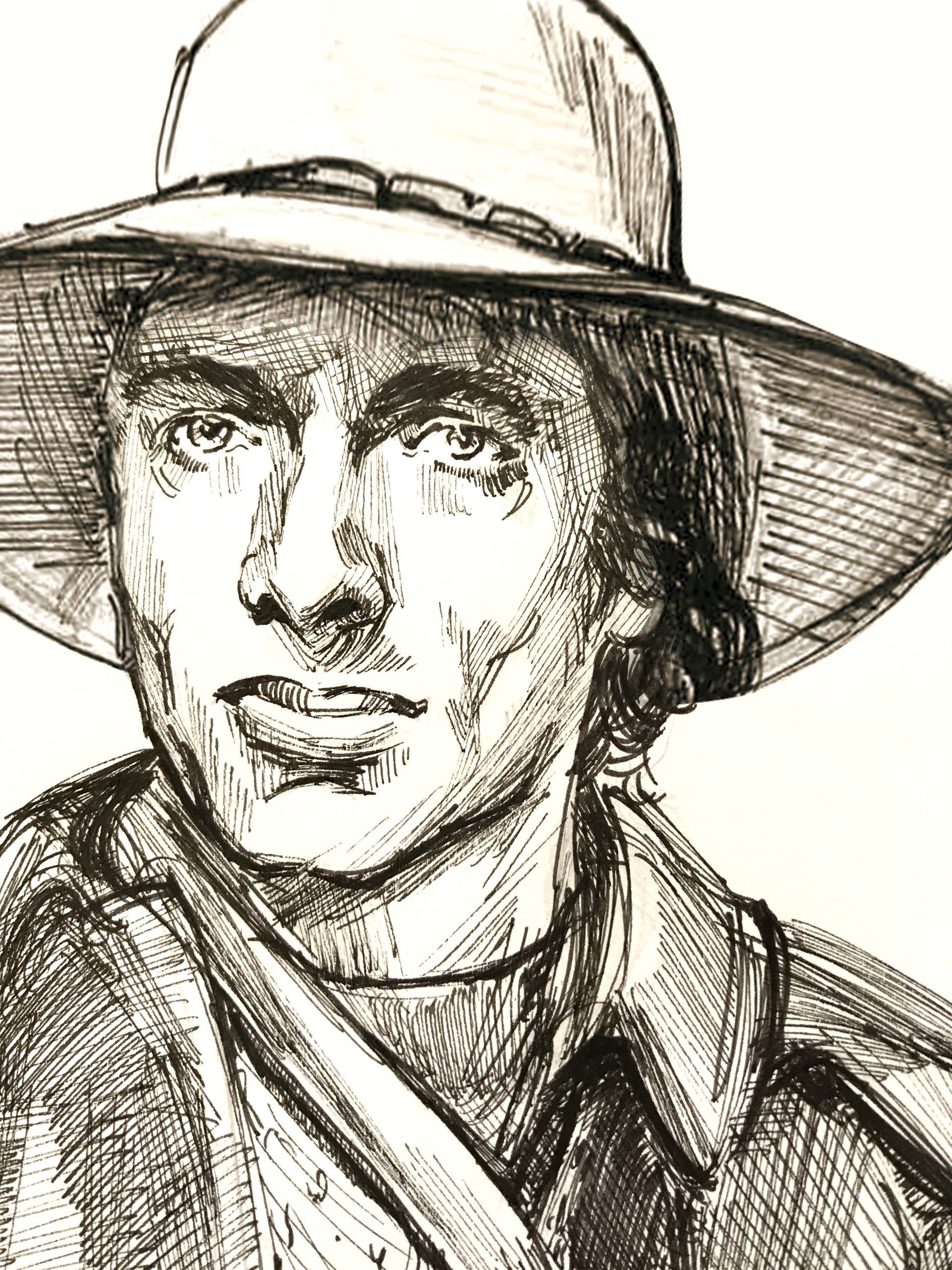
In other words we take your dream from its raw abstract form and begin to turn it into a well-thought-out tangible work of world-class fine art. Our ultimate goal is to establish, further develop, and work through the formal qualities of Fine Art, such as: gesture; scale; concept; unity; materials; engineering; relationship to the viewer; dress/attire; base; context; lighting; site location; base design; historical accuracy, etc.
Next we let the art organically evolve, then edit to perfection. This is the place to make changes-while everything is still merely on paper, and can quickly, and easily be altered. Throughout the process we anticipate and welcome your feedback so you get to be involved as the piece evolves to a place of fruition.
Our sketches below were based on a great deal of historical research, nearly ten meetings with the town's memorial commission, and individual interviews with experts, specializing in period garb, in order to ensure the historical accuracy of elements such: style hat; hair length; and specific details of all clothing, buttons, straps, etc.
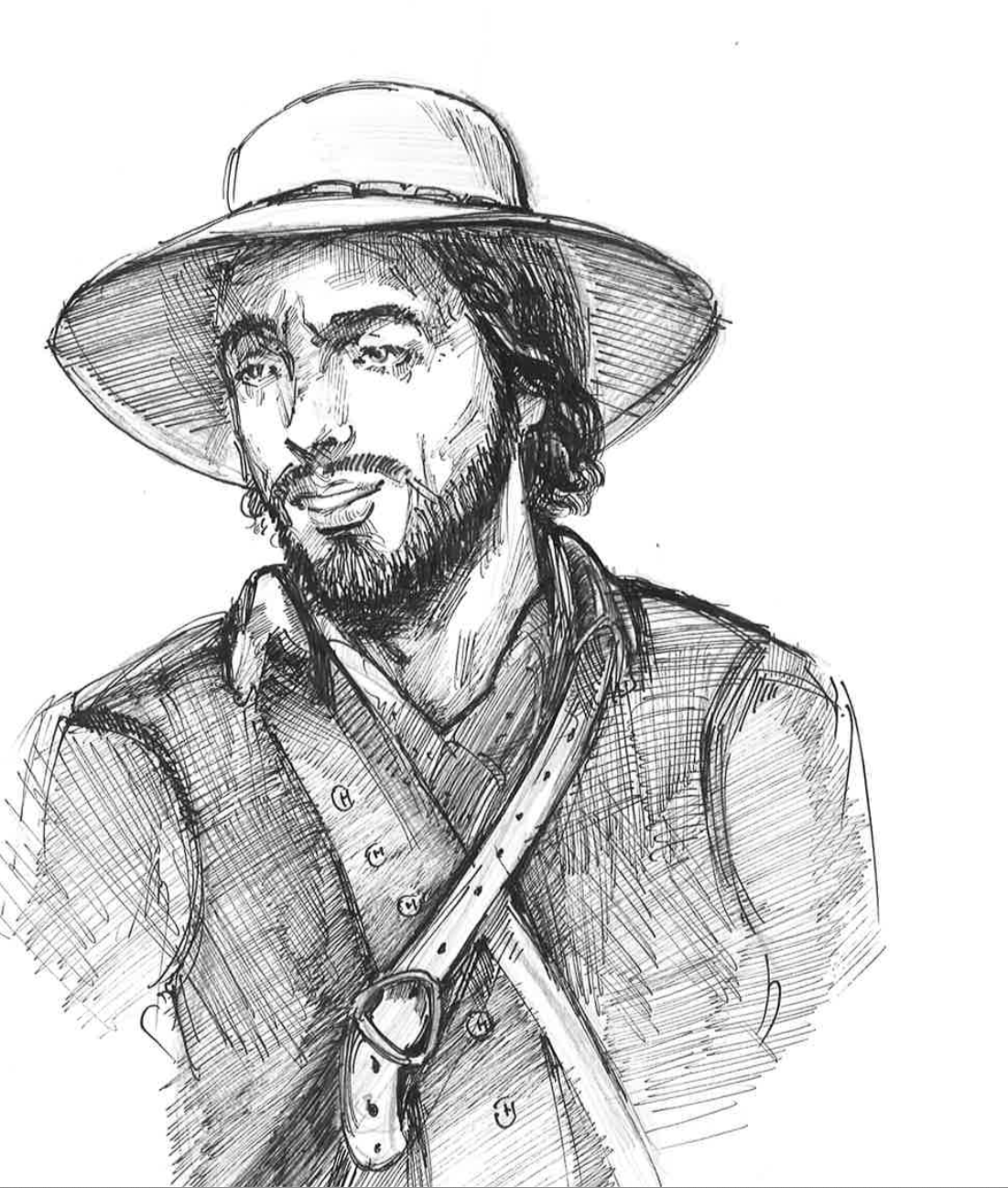
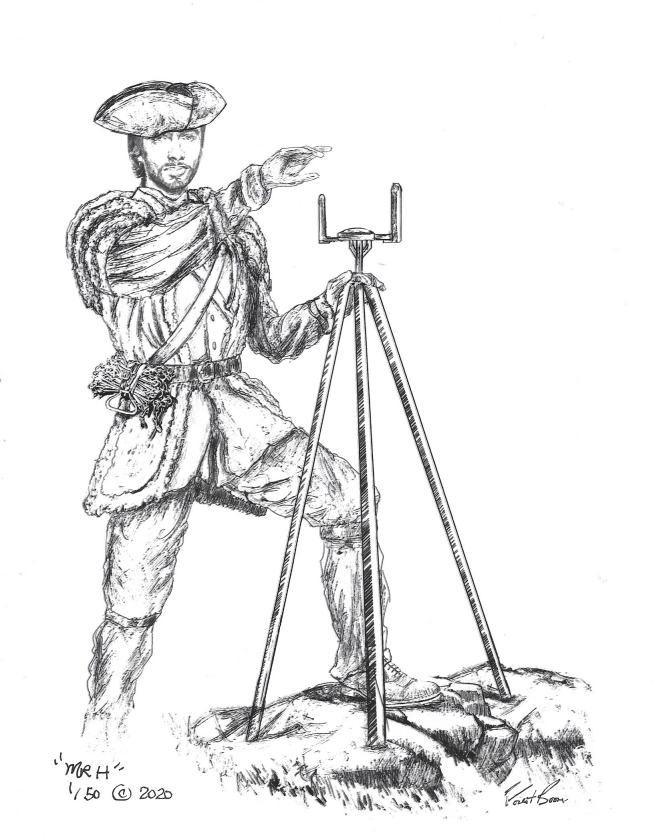
The pre-scale-model renderings, above and below, were all based on a great deal of historical research, meetings, photoshoots, and interviews.
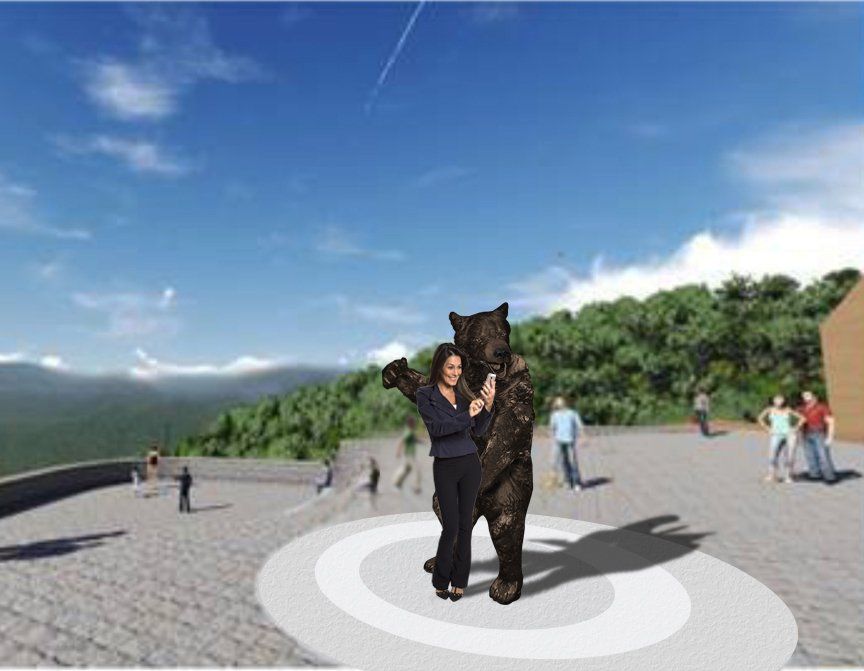
This bronze bear statue was for a scenic overlook site in a state park. Note that in today's day and age it is fairly common for spectators and visitors to use public art as a photo opportunity, so we generally take that modern phenomena into consideration during the planning phase, hence the selfie.
Graphic renderings are where we begin to work through scale issues as well (below). It is important to take the context of the sculpture into consideration. In other words, understanding the relationship between the sculpture and where it will be installed. If, for example, the site has a sky-scrappers or huge bridge behind it, as a backdrop or sorts, then we might increase the scale of the sculpture to 1 1/2 times life size, or even to twice life size, to keep it from being "dwarfed" by the site's surroundings. If necessary, to get this right, we sometimes literally use a cardboard cut-out of the sculpture's rendering that is scaled to different heights and take those cardboard mockups to the actual site, for scale studies. Like we said earlier, we are sort of old fashioned that way.
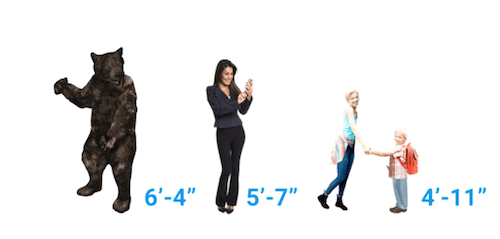
We also consider the scale between the piece and its viewers within the context of the site.
After all of that is worked out in two-dimensional sketches or graphic renderings, the next step is an exciting one: for us to create a small scale model, made of clay. This is called a maquette, which is a small-scale model of the sculpture made of clay, as can be seen in the examples below.
Creating High-End Bronze Statues from Start to Finish
The image on the left below shows the scale clay model for Forest Boone's Leap of Faith bronze statue. Next to the small version, modeled in clay, is the final large-scale bronze sculpture. See how the two look nearly identical? That is no accident. The idea is that you, the client, gets to give input at the small-scale model stage, while it is still quick, easy, and cheap to make changes, in order to ensure that you are 100% satisfied before that little clay maquette is enlarged and cast in bronze.
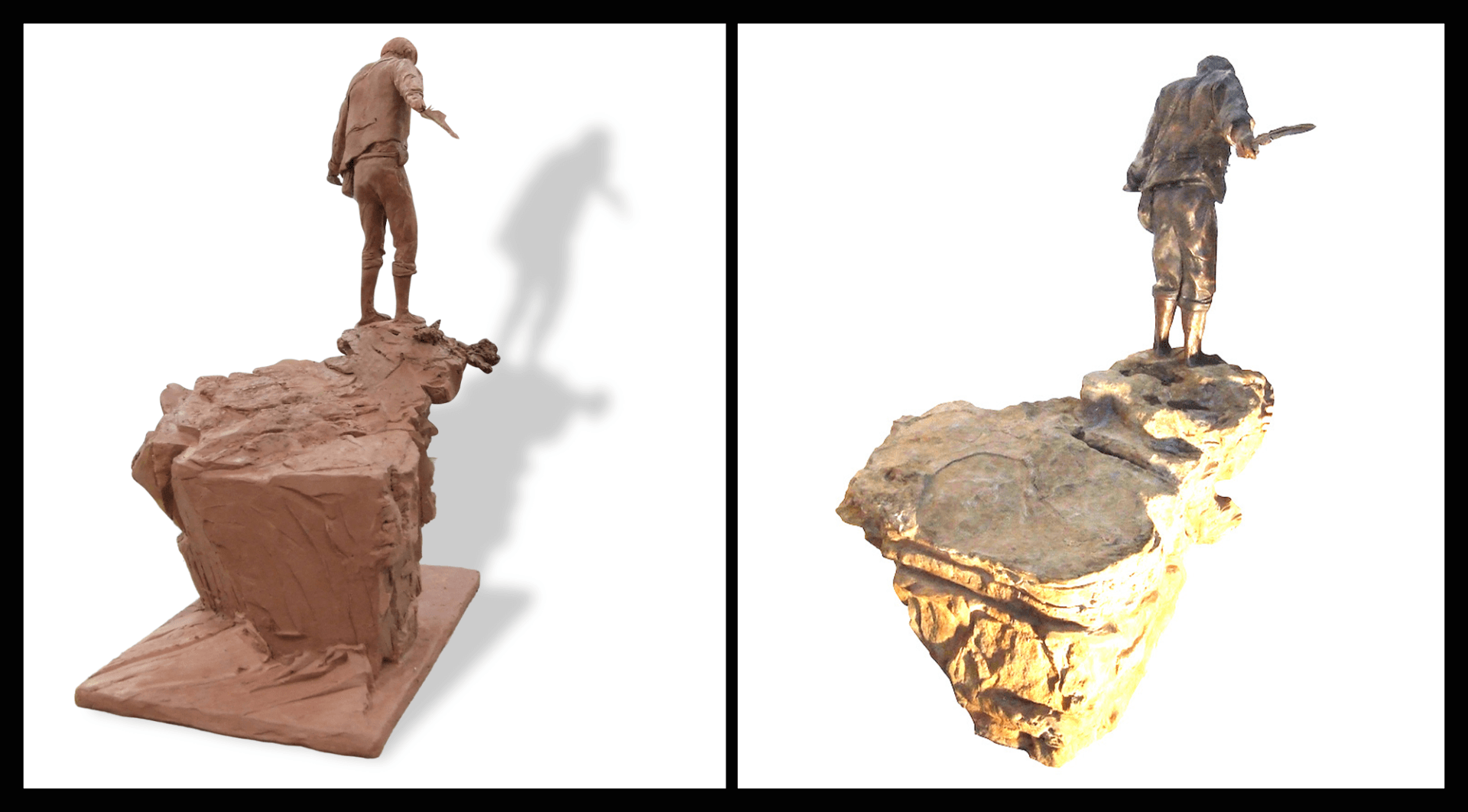
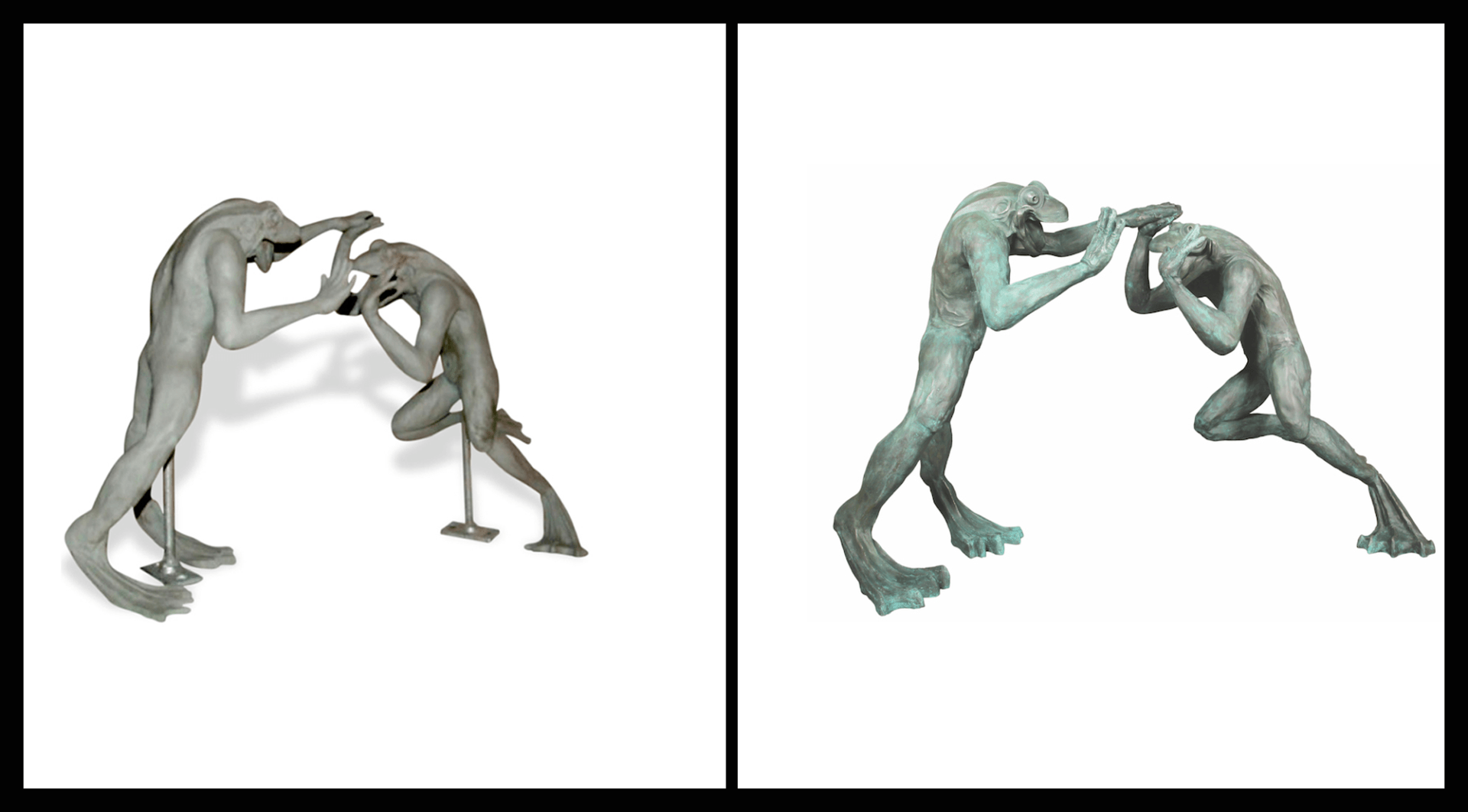
This image above shows the two original small (1/7th scale) clay frogs sculptures in full gestural form, on the left. We sculpted this two-part clay model at 1/7th scale. Shown on the right are the large-scale frogs, personified, in bronze, seven feet tall. The client wanted a green [patina] finish rather than the traditional golden brown bronze color, since frogs are usually green, when found in nature. We chemically heat treat your bronze statue, in order to color it, achieving virtually any color imaginable. The color is permanent. So that color is stable under the sun's ultra violet light, as well.
Next, you see the four foot by eight foot scale model (in this case, made of wax) for the Taltree Arboretum and Railway Garden in Valparaiso, Indiana. Forest was hired to work closely with a team of engineers, landscape architects, contractors, and volunteers for about a year to design all of the waterfalls, stream beds, mountain peaks, talus slopes, truss systems breaks, and tunnels for this site-specific-installation piece. Then the actual installation realized from the wax model.

Boone created everything at 1/12th scale.
The physical model he made built everything to scale, on site, as you can see in the comparison image above.
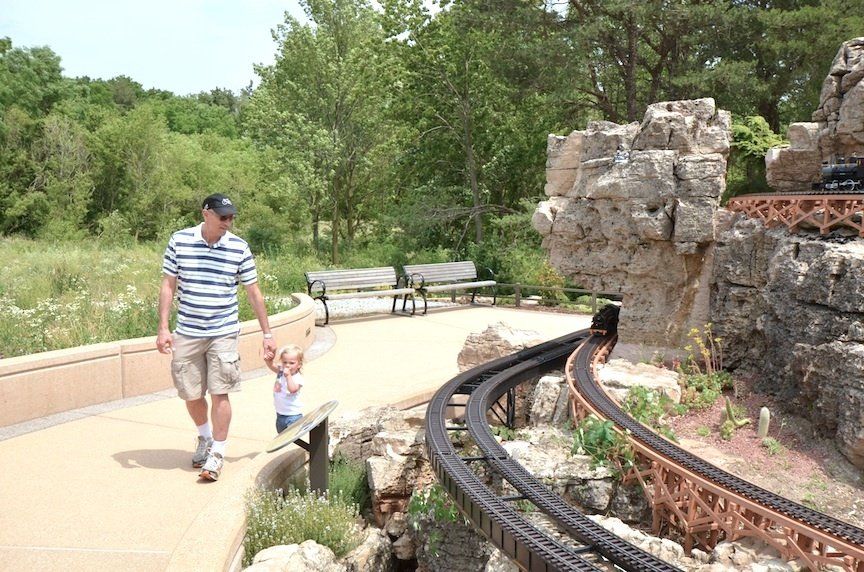
If you consider the detailed image of his wax version below, you can easily see how that was realized large scale.
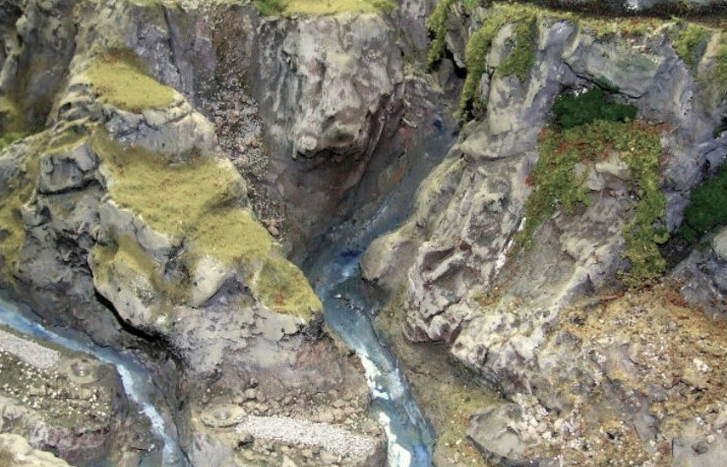
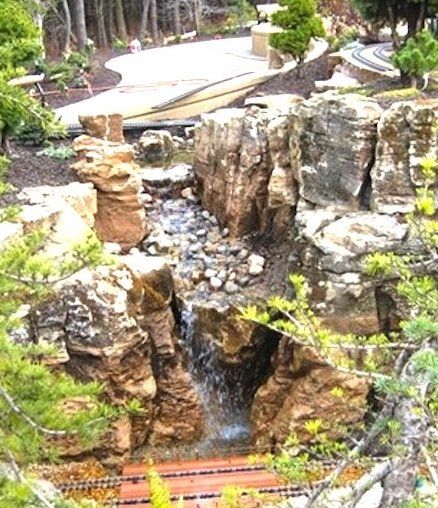
The large scale version is fully operational at the museum and complete with a number of miniature working trains, miles of train tracks, ravines, and numerous vignettes throughout the installation.
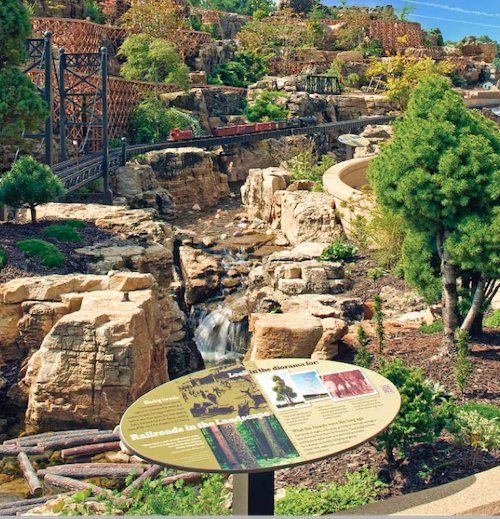
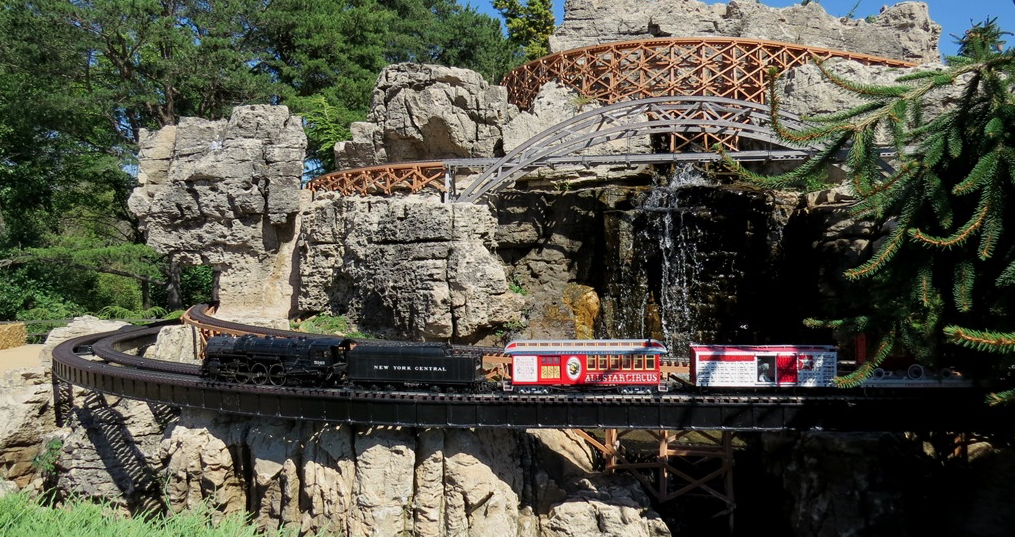
Next shown is the 13-foot wax model we made for what is called an escarpment. Think of it as a small mountain with a dead-end canyon. This was based on Forest's original pencil sketch. The after image to the right of the wax model shows the finished piece, which was 136 feet long and required over 12,000 pounds of internal reinforcement bar (epoxy coated for lifetimes of non-rust), and 8,000 pounds of colored pigment.
-
Click to Read More About This Sculpture
Forest Boone started this monumental undertaking with two pencil sketches, back in 2007, proposing ideas for the small mountain, designing every outcropping, boulder, overhang-every square inch of what you see here, from scratch! Once the client approved the small scale model, Boone then sculpted a 5-foot scale model out of plaster, then he sculpted a larger 13-foot long wax version, nearly identical to what you see here [learn more]. That last model, he and his team later enlarged to 136' long, but in reverse, thereby creating the world's largest mold. The mold was so big in fact, that it required ten 40-foot shipping containers just to ship that styrofoam from the port of San Francisco to the island of Kauai!
The rock sculpture itself stands over 20 feet tall at the stone arch bridge and required: a number of barges of silica sand to be imported from Southeast Asia; thousands of pounds of epoxy-coated rebar; and thousands of pounds of colored pigment. "The volcanic sand found on the shores of the Hawaiian Islands is not the color and texture of Sandstone, so I felt it was necessary if I was to mimic what is seen in "Navajo country," Boone explains. Boone goes on to say, "I also had to duplicate geomorphic shifts and talus breaks, so I used a diamond blade on an angle grinder to simulate large chips on the surface and also to deepen the cracks, nooks, and crannies. The stone arch bridge was roughly 70,000 pounds alone. We cast it in place using articulated joints in order to not crack apart when seismic activity occurred on the island. For the finishing touch, I applied light color washes to highlight the peaks, and darks for the valleys and interior of the cave."

Below is the small scale model of Lewis and Clark's slave, York, that went with them on the expedition across the country, and was originally from Louisville, Kentucky. It is followed by the fully realized sculpture. Forest and Ed collaborated on this piece which is another example of stone and bronze working together.
The 32,000 pound monolithic sculpture, upon which York is perched, provides a cliff-like context for the bronze, emphasizing the rugged exploration of untamed lands. The statue of York on the base overlooks the Ohio River in downtown Louisville, and appropriately faces West. If you imagine this same sculpture on a square block of granite, would that not considerably weaken the power of the sculpture?
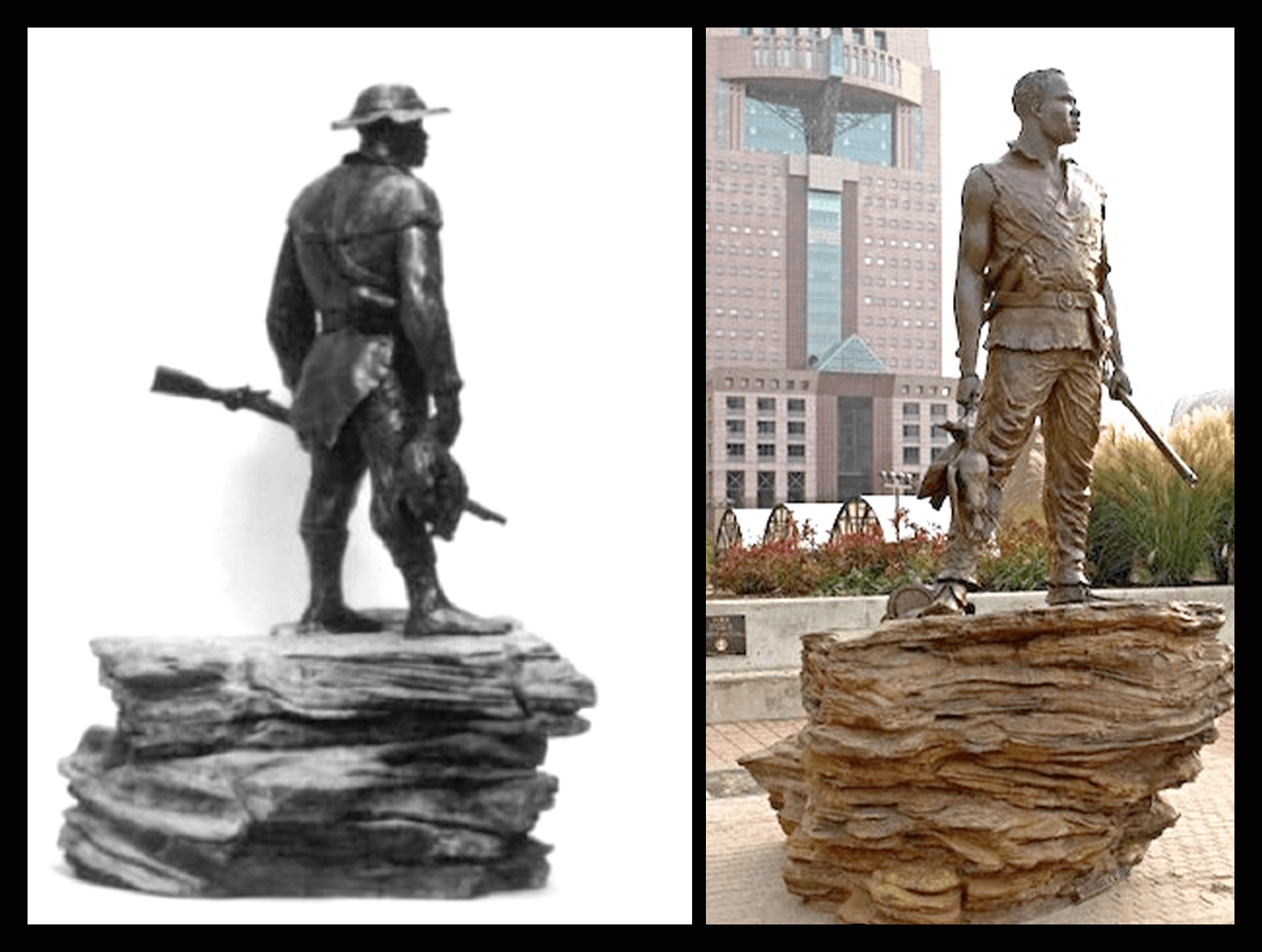
Lastly, here is their collaborative Abraham Lincoln memorial, modeled in clay. The idea behind this design was to have the large-scale bronze and stone version of Lincoln down near the earth, with an open-armed gesture, inviting spectators to "step on up" the tiered stone base, to sort of sit in the lap of justice and equality as Lincoln was "a man of the people." The laser engraved granite behind Lincoln credits him for his now-famous quote, so it is only fitting that rather than towering above the on-lookers in an intimidating way, he instead invites them to "sit a spell."
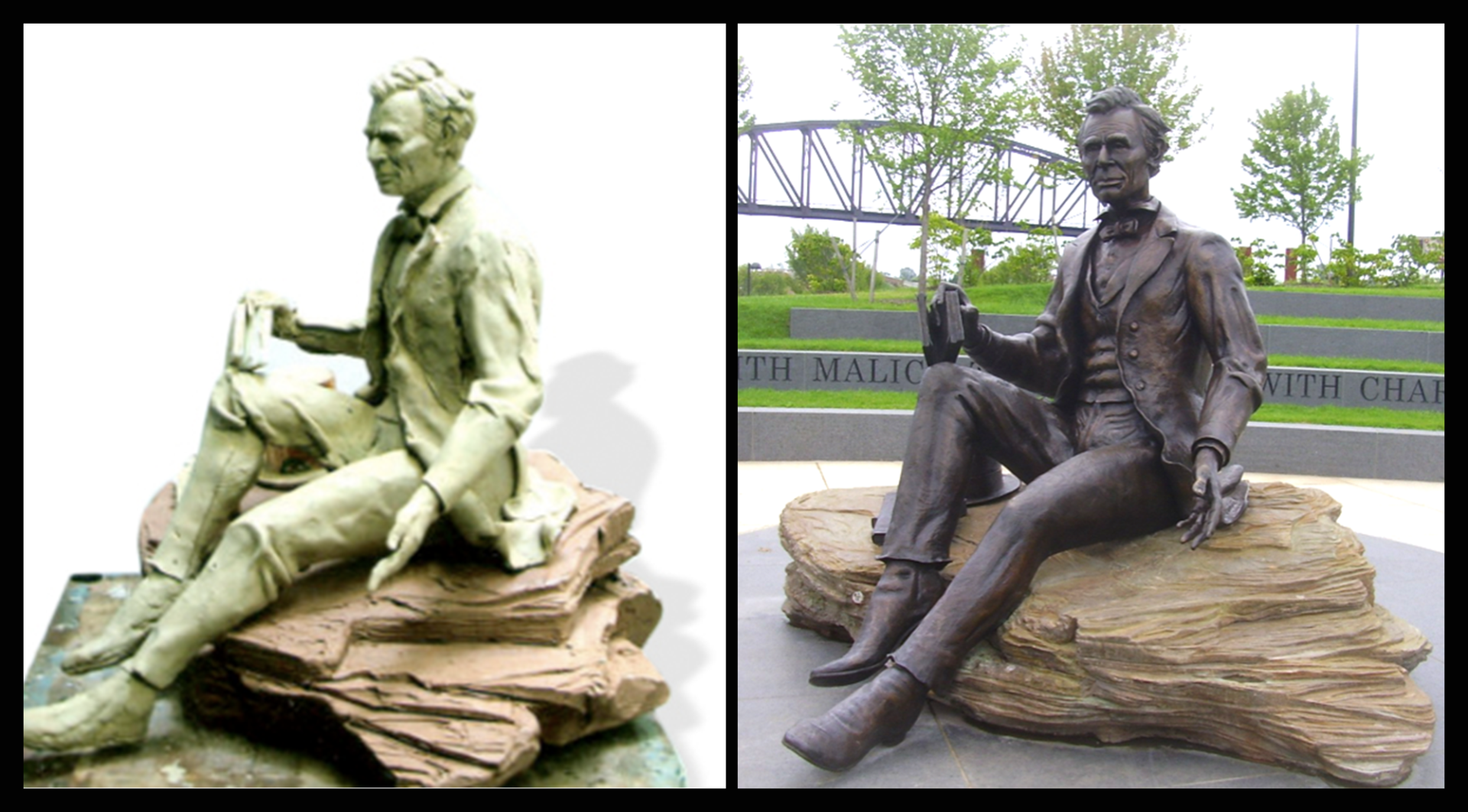
So, just to recap, the before and after images above have been the small scale model phase which follows the sketches and initial conceptualization. We go to any length to push each sculpture design to a place of excellence.
As you can see below we started out with solid figures to be cast in bronze - the cow and pig
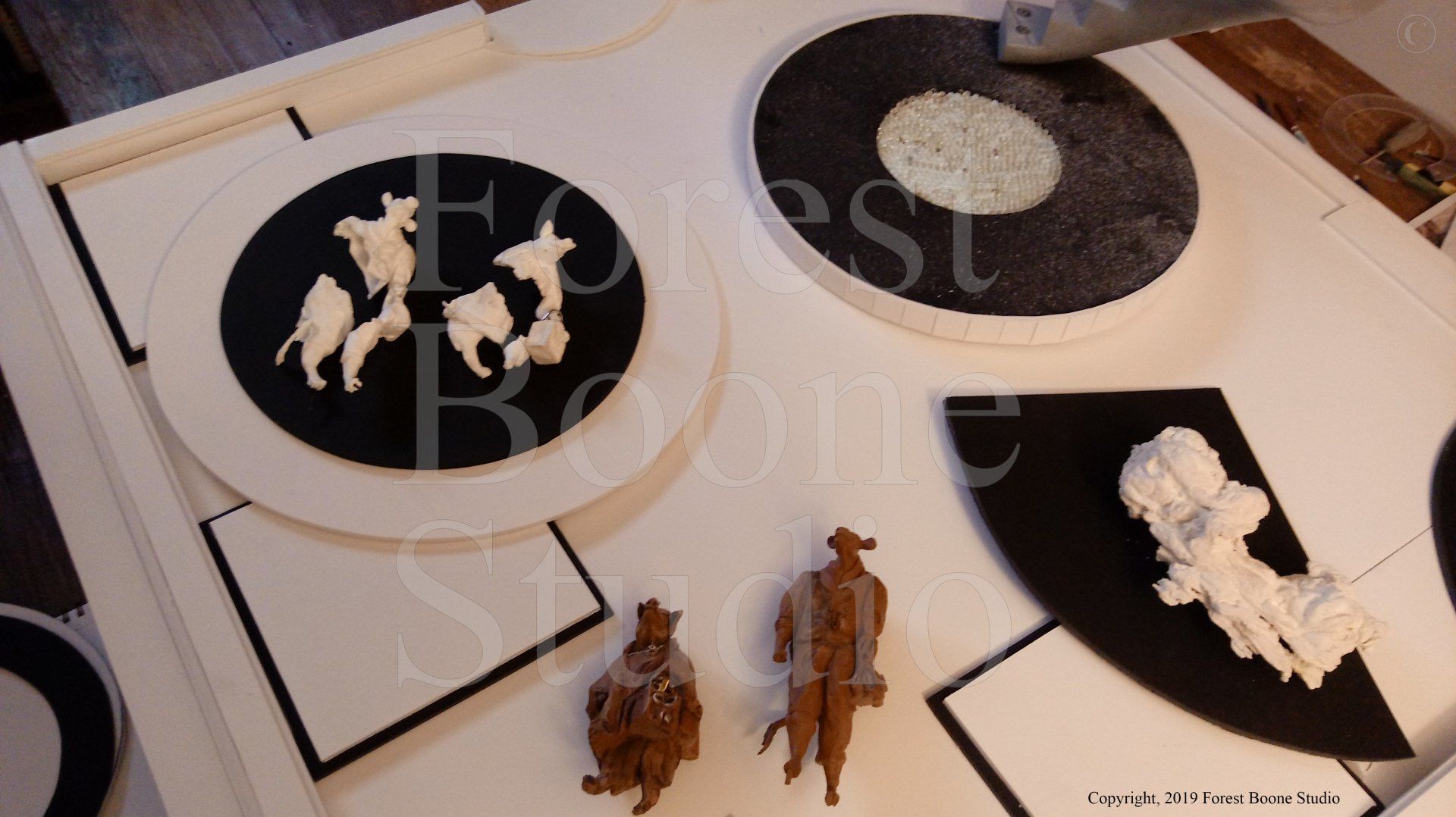
After perfecting the design, we ended up with the lighter, more ethereal, almost ghost like versions of the sculpture which strengthened the overall concept, since these were prototypes (or maquettes) for an outdoor large scale bronze animal memorial for the University of Louisville School of Medicine.

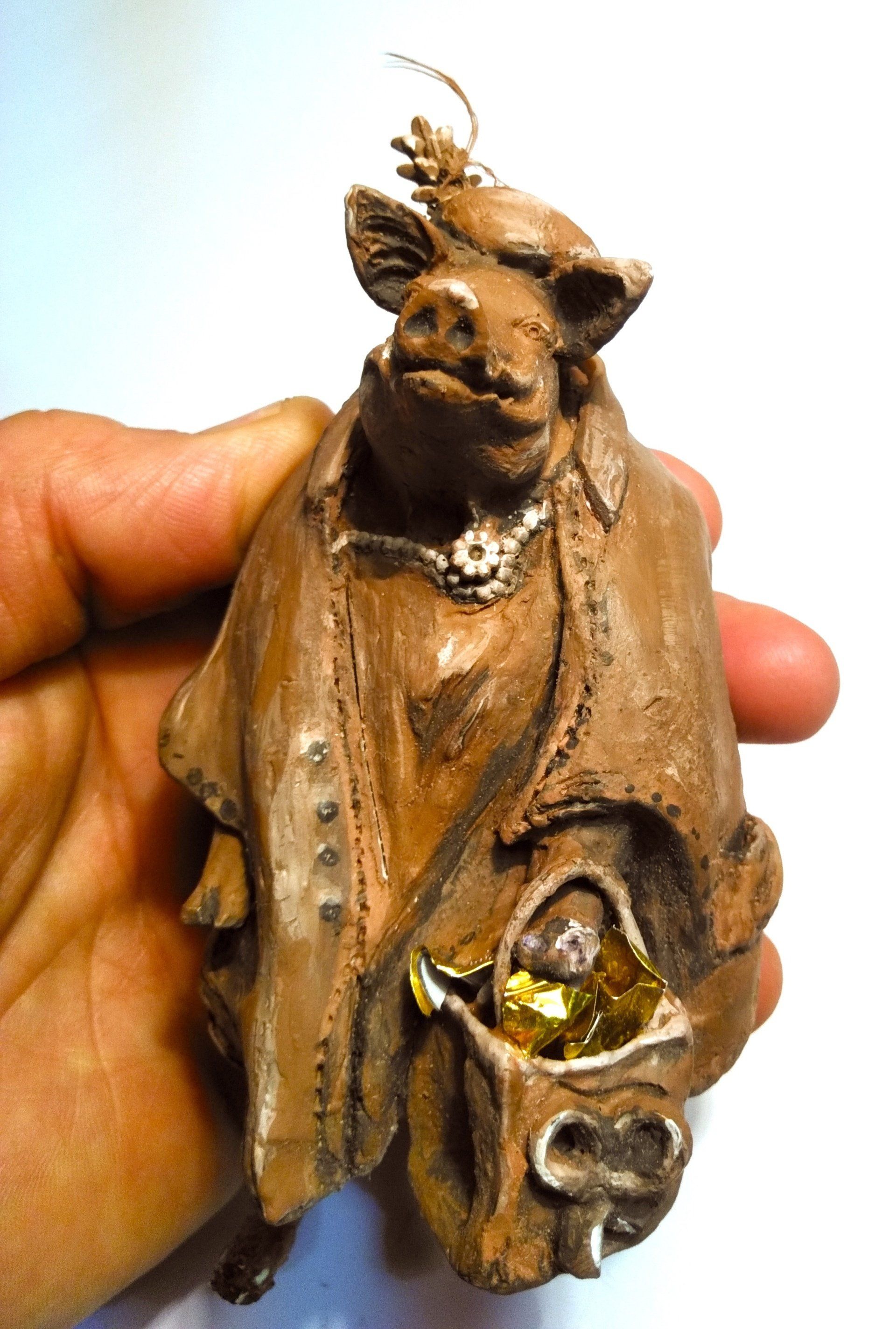
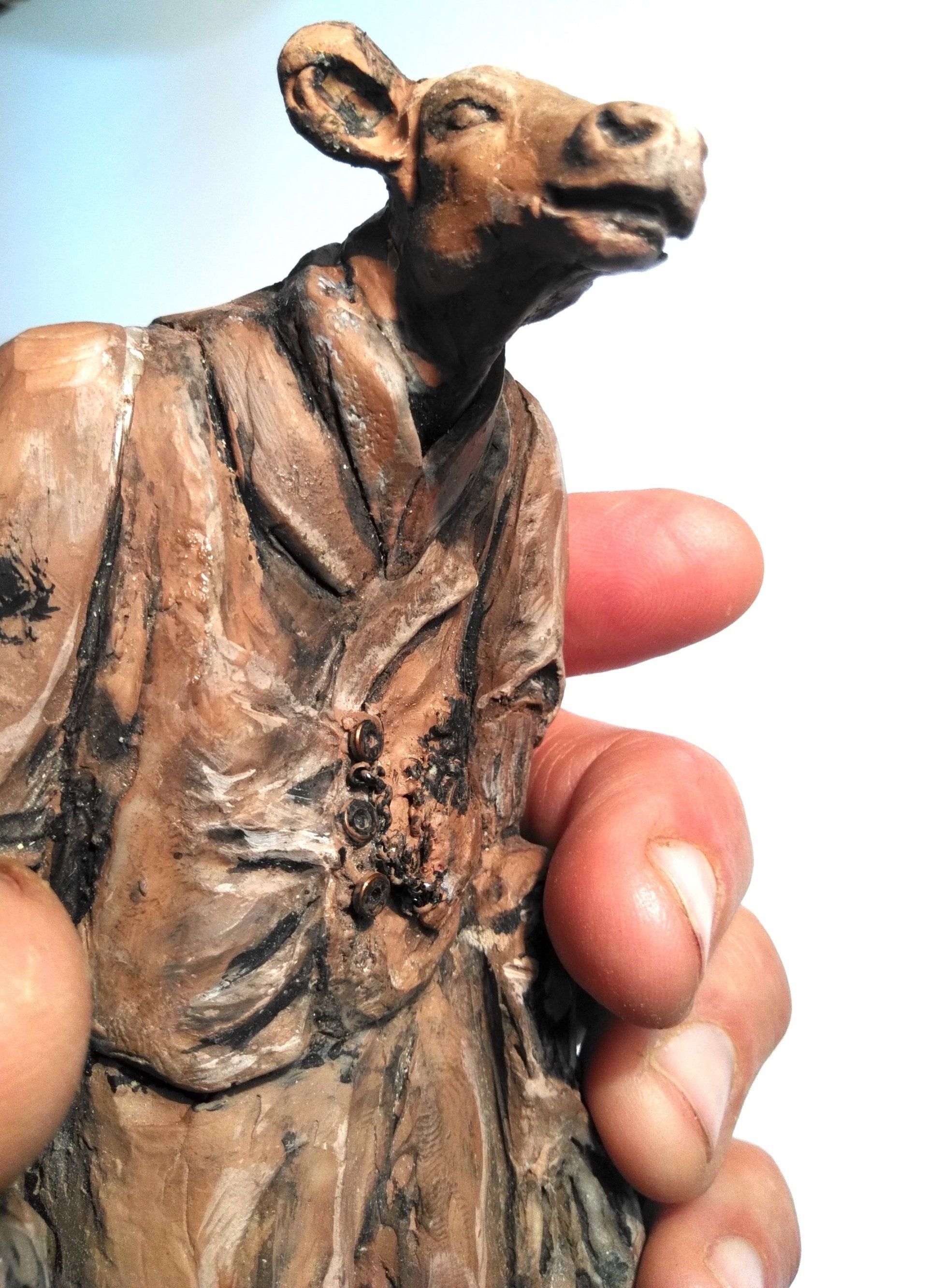
After you, the client, is 100% satisfied with the scale model we can then begin sculpting the piece in clay, at actual size and likeness of the sculpture which eventually ends up in bronze.
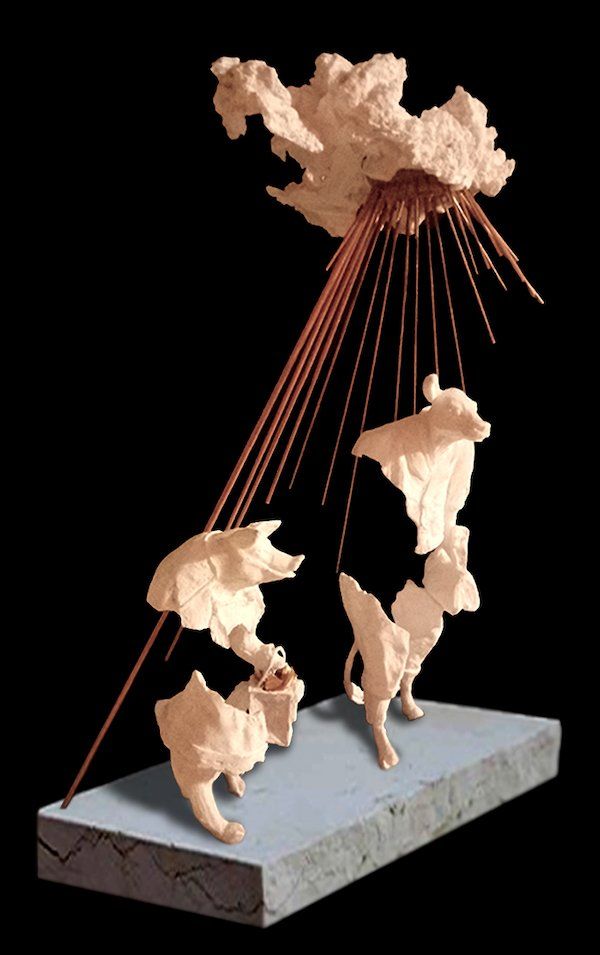
STUDIO
1000 Swan Street
Louisville, Kentucky 40204


